Vertebral Augmentation
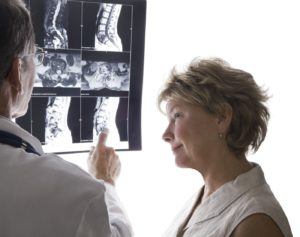
Understanding Vertebral Compression Fractures
Vertebral Compression Fractures (VCFs) are the most common fracture in patients with osteoporosis, affecting about 750,000 people annually. VCFs affect an estimated 25% of all postmenopausal women in the United States.
The prevalence of this condition steadily increases as people age, with an estimated 40% of women age 80 and older affected. Although far more common in women, VCFs are also a major health concern for older men.
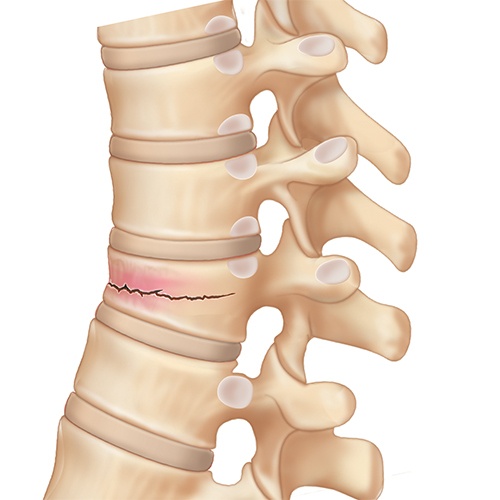
Vertebral compression fracture
VCFs have a substantial and negative impact on the quality of life and day-today functioning of those afflicted. Short-term and long-term pain in the elderly is commonly attributed to vertebral compression fractures, which may lead to further health decline.
Because there is a substantial risk of subsequent fractures of all types in people who have had a vertebral compression fracture, it is important that VCFs are diagnosed and treated early.
What causes a vertebral compression fracture?
VCFs occur when the vertebral body in the spine collapses, which can lead to pain, deformity and loss of height. These fractures more commonly occur in the lower thoracic spine (the middle portion of the spine). While osteoporosis is the most common cause, these fractures may also be caused by trauma or cancerous tumors.
In people with severe osteoporosis, a VCF may be caused by simple daily activities, such as stepping out of the shower, sneezing vigorously or lifting a light object. In people with moderate osteoporosis, it usually takes increased force or trauma, such as falling down or attempting to lift a heavy object to cause a VCF. People with healthy spines most commonly suffer a VCF through severe trauma, such as a car accident, sports injury or a hard fall.
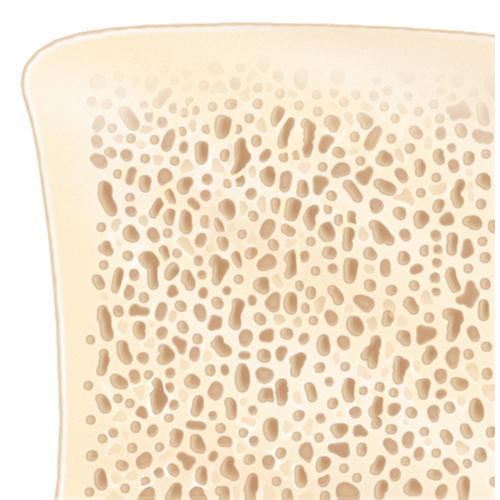
Healthy bone
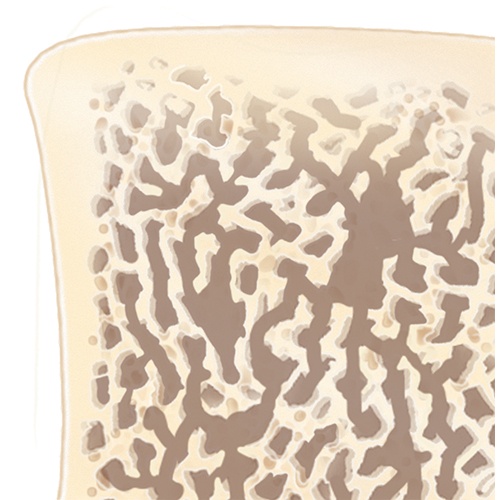
Osteoporotic bone
Cancerous tumors may be considered a potential cause of VCFs in patients younger than 55 with no history of trauma or only minimal trauma. The bones of the spine are a common place for many types of cancers to spread. The cancer may cause destruction of part of the vertebra, weakening the bone until it collapses.
What are the symptoms of a vertebral compression fracture?
VCFs caused by osteoporosis, tumors, malignancies, and other pathologies may impact the patient’s quality of life. The following effects of sustaining a VCF may occur:
- Sudden onset of back pain
- Increase of pain intensity while standing or walking
- Decrease in pain intensity while lying on the back
- Limited spinal mobility
- Eventual height loss
- Eventual deformity and disability
- Reduced mobility, loss of balance and increased risk of falls
- Reduced lung function
- Reduced physical activity and increased bed rest
- Chronic back pain and fatigue
- Decreased quality of life
- Increased risk of future fracture
- Increased risk of death
VCF Treatment with Vertebral Augmentation
If you have been diagnosed with a VCF caused by osteoporosis, cancer or benign tumors, vertebral augmentation is a treatment option you may consider. Vertebral augmentation is a minimally invasive procedure that may reduce back pain and repair the vertebral compression fracture.
Before the procedure
Your doctor will perform a physical exam, ordering x-rays and other imaging tests such as MRI, CT or bone scan to determine the precise location of the fracture, how recently the fracture occurred and whether performing Vertebral Augmentation is the most appropriate treatment. The procedure can be performed under local or general anesthesia – your treating physician will decide which option is appropriate for you.
During the procedure
Vertebral Augmentation is generally performed through a small tube under local or mild sedation, eliminating many of the complications of open surgery. However, in some situations, general sedation is advised.
Your back is then numbed with a local anesthetic. Using x-ray guidance, a balloon is inserted into the fractured vertebra through a small incision.
The balloon is then inflated, creating a void, or cavity, on the inside of the vertebral body. Once the void is created, the balloon is deflated and removed.
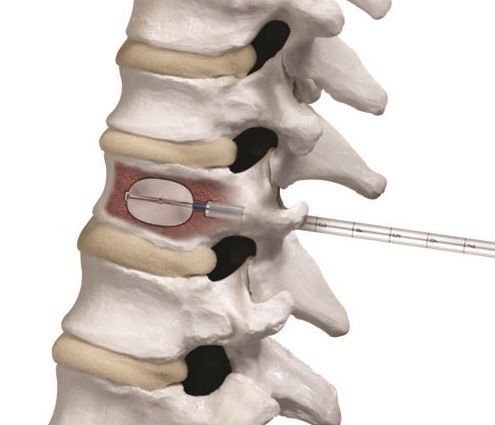
The void is then filled with bone cement to stabilize the compression fracture. As the cement hardens on the inside of the vertebral body, it will form internal support for the fractured vertebra.
Vertebral augmentation takes about one hour per fracture treated. It may be done on an inpatient or outpatient basis, depending on medical necessity. After the procedure, you will most likely be transferred to the recovery room for observation.
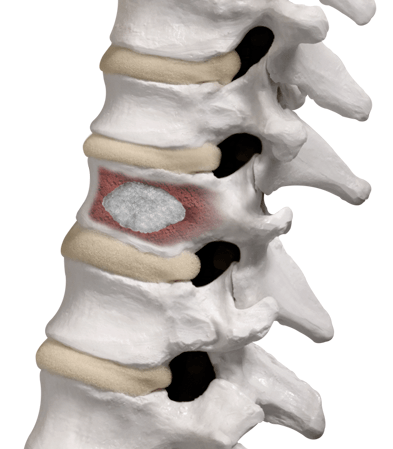
After the procedure
After your VCF procedure, you will remain flat on your back for a period of time, in order for the cement to completely harden.
Typically, patients are able to be discharged within a few hours after treatment. The incision sight is covered with a bandage.
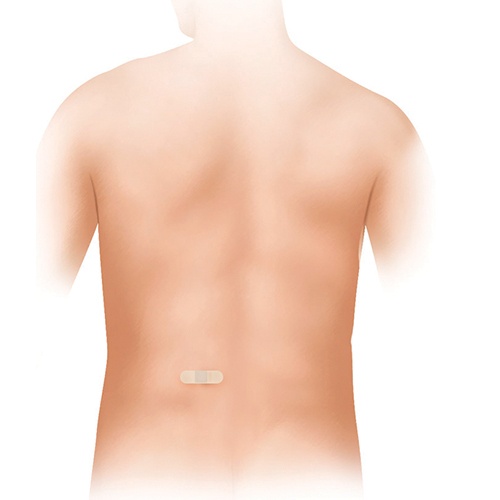
Post-operative incision
Disclaimer:
The material on this website is intended to be an educational resource only and is not meant to be a warranty or to replace a conversation between a patient and their physician or member of their health care team. Please consult a physician for a complete list of indications, contraindications, precautions, warnings, clinical results and other important medical information that pertains to this procedure. The decision to receive medical treatment is individualized to the patient and the patient’s symptoms. The information presented on this site may not apply to your condition, treatment or its outcome, as surgical techniques vary and complications can occur. It is important to discuss the viability of any surgical procedure with a physician to decide the right treatment option.
